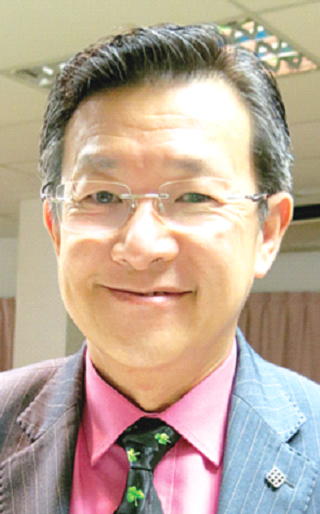A genius that M'sia didn't want
Published on: Saturday, July 09, 2016

Kota Kinabalu: Tam Hwa Yaw (pic) is an engineering professor, an award-winning inventor, a Fellow of the Optical Society of America and an internationally much-sought after keynote speaker. But his greatest regret is not being given the opportunity to contribute towards Malaysia's success in the areas that he specialises in – because the country was simply not interested in him. Tam speaks fondly of Sandakan where, after his father passed away when he was 16, he helped hawkers to move their goods from a rented shop nearby to the Sandakan Market. The money he earned was for his subsistence and that of his family. He also gave tuition to lower classes in the afternoon.
ADVERTISEMENT
But being unaccepted by the place that he grew to love was something he was unprepared for. Holding PR status because he was born in Brunei, Tam yearned for a Malaysian citizenship but the country rejected him.Having moved to Sandakan where he grew up until he completed his Senior Cambridge Examination at Sung Siew Secondary School in the mid-seventies, Tam lost his Malaysian Permanent Resident status and became a stateless person while studying in the United Kingdom, forcing him to become a British citizen."Being a Chinese, it was difficult to obtain citizenship status. I enjoyed PR status in Sabah until I left Sandakan for further studies in the UK in 1979. The ruling was that you could not live outside Sabah for more than two years without renewing your PR status.
ADVERTISEMENT
"However, when I applied for renewal within two years while in the UK, the Malaysian High Commission in London rejected my application. They never gave any reason. They stated that my application was rejected. That's it. That's how I lost my chance to be a Malaysian and contribute to the nation.
ADVERTISEMENT
"The High Commission made me stateless and so I couldn't come back to Sabah. I had nowhere else to go…I studied in the UK, then I got a job and became a British citizen. That was my first citizenship," Prof Tam related when met at the recent 10th Sindex Awards Night where he was the Chief Judge. On why he chose Hong Kong to reside, he said it is because of its proximity to Sabah where both his eldest and younger sisters live today.Prof. Tam graduated with a Bachelor of Science degree (Electrical and Electronics Engineering) from the University of Manchester in 1985. Five years later, he obtained his doctorate in Engineering from the same university.Between 1989 and 1993, he was a senior research scientist with Hirst Research Centre, GEC-Marconi Ltd (London), and worked on optical components and systems, and erbium optical fibre amplifiers for high-speed optical communications."Optical fibres (glass fibres through which light can be transmitted) are used not only for telecommunications but also as sensor systems for security and safety applications. My point is that optimal fibre sensors are for safety monitoring of high-speed rail systems."While in the UK, I built two of the first batch of optical amplifiers for Marconi Italiana, Geneo (Italy). That was prior to my joining The Hong Kong Polytechnic in 1993," he recalled.Today, Prof Tam is the Head of Department and Chair Professor of Photonics of the Department of Electrical Engineering at The Hong Kong Polytechnic University. He has established several world-class research facilities at the University, including two fibre-drawing towers for fabrication of photonics crystal fibres and polymer optical fibres, an ultra high-speed communication laboratory, and laser platforms for the fabrication of advanced fibre gratings.He and his team have installed the smart railway condition-monitoring system for railways in Hong Kong, India and Taiwan, and for high-speed trains (350km/hr) in mainland China. "We built and installed condition-monitoring systems for 90pc of the trains in Hong Kong. We are installing similar systems to monitor trains in Singapore now. My company has secured the project to design and build two Singapore's first photonics sensing networks to monitor track's corrugation, train vibration, and unbalanced load of the trains on the SMRT North-South Line, and SMRT East-West Line (period: 2015-2020)." Prof. Tam, who is also International Dean of Southwest Jiaotong University, China, has won numerous awards and honours for his inventions, professional services and innovations, as well as research and scholarly activities. Fourteen of his inventions, including Railway Monitoring System, System and Process for Monitoring Railway Tracks, and Ultrasound Sensor and Ultrasound Management Device based on Fibre Laser Sensor, have been granted patents by the United States, United Kingdom, Europe and China. Prof Tam, who has published more than 500 technical papers, was the Third Prize Winner of Berthold Leibinger Innovationspreis 2014. His winning inventions were "Railway Monitoring System" (US Patent and Chinese Patent), "System and Process for Monitoring Railway Tracks" (European Patent) and "Temperature-compensated Fibre Optic Strain Gauge" (US Patent). From these inventions, he developed a Photonic Sensing Network based on Scanning Laser and Fibre Bragg Grating Sensors for Structural Health Monitoring (SHM) and Condition Monitoring of tall buildings and railway systems. Berthold Leibinger Innovationspreis is a biennial event in Germany and one of the highest remunerated international innovation prizes for laser technology. Among his notable achievements were to design and build a fibre-optic sensing network comprising 202 fibre Bragg Grating-based sensors and over 100km of single-mode optical fibre for structural health condition-monitoring of the 610-m tall Canton Tower in Guangzhou, China (period: 2007-2010), and to design, build and install the world's first city-wide fibre-optic sensing network to monitor the operation condition of all urban metro lines in Hong Kong (period: 2013-2015).In June last year, Prof Tam co-founded Volant Railway Technologies Co. Ltd, Hong Kong, which excels in innovative solutions, and is now its Principal Adviser. The company specialises in designing, building, installation, and commission of massive photonics sensing networks for condition monitoring of railway systems.Stay up-to-date by following Daily Express’s Telegram channel.
Daily Express Malaysia




